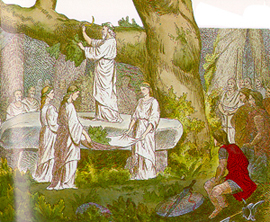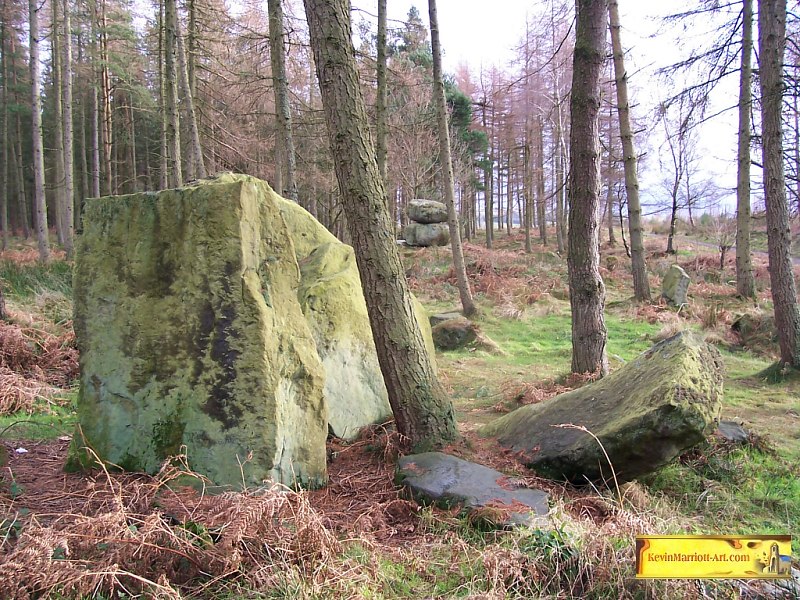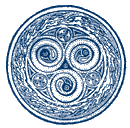 |
 |
| The Celtic tree calendar is made up of thirteen months and day. Each month is named for a tree which signifies particular qualities of that moon during that lunar cycle. Trees are one the most potent magic symbols, especial for the celts. Tree formed a bridge that carries water from the earth up to the sky. They provide food, shelter, water, tools, warmth and medicine. They also change with the seasons providing a symbolic reminders of the cyclic rhythms of nature. Also the cycle of life, death and rebirth. Trees live far longer then humans and their memory can span hundreds of years. Beth (Birch) December 24 to January 20 Luis (Rowan) January 21 to February 17 Nion (Ash) February 18 to March 17 Fearn (Alder) March 18 to April 14 Saille (Willow) April 15 to May 12 Uath (Hawthorn) May 13 to June 9 Duir (Oak) June 10 to July 7 Tinne (Holly) July 8 to August 4 Coll (Hazel) August 5 to September 1 Muin (Vine) September 2 to September 29 Gort (Ivy) September 30 to October 27 Ngetal (Reed) October 28 to November 24 Ruis (Elder) November 25 to December 22 December 23 is not ruled by any tree for it is the traditional day of the proverbial "Year and a Day" in the earliest courts of law. |
 |
| ALDER This tree was sacred to the Druids. The pith is easily pushed out of green shoots to make whistles. Several shoots bound together by cordage, can be trimmed to the desired length for producing the note you want and used to entice Air elementals. The old superstition of "whistling up the wind" began with this custom. ASH A Druid sacred tree. Druid wands were often made of ash because of its straight grain. Ash wands are good for healing, general and solar magic. Put fresh ash leaves under your pillow to stimulate psychic dreams. BIRCH The Birch stands out as a graceful, slender tree with a characteristic white bole. The white indicates cleanliness and determination in overcoming difficulties. This tree starts the celtic tree calendar, and so represents the energies associated with new beginnings. ROWAN The Rowan has long enjoyed its reputation to protect against enchantment. It name is linked with the Norse 'runa', a charm, and the Sanskrit 'runa', meaning a magician. Rune staves, sticks upon which runes were inscribed, were cut from the Rowan tree. Rowan played a central role in Druid ceremonies. Even in more recent times, these beliefs have been upheld in practices from different parts of Britain. In the North, for example, sparys of Rowan were fixed to cattle sheds to protect the animals from harm, and in Strathspey farmers drove their goats through hoops framed from branches of Rowan. Sprigs were also placed over the main door of the house and also worn on the person to ward off false enchantment -- the 'evil eye'. In Wales or Cymru, Rowans used to be planted in churchyards to watch over the spirits of the dead, as Yew is elsewhere. WILLOW The Willow in the Tree alphabet stands for the female and lunar rhythms of life. She is water-seeking, thriving from preference on the damp margins of lakes and streeams or across the low-lying water meadows. Water and the tidal movements of the sea are governed by the pull of the moon. The moon in its monthly rhythms is female, contrasting with the male sun's daily and yearly turnings. In several ways, the Celts held women in higher regard than we do today. On the material level, women were property owners, and whoever controlled the property controlled the marriage. Women of all types and ages appeared in the Celtic pantheon, the spiritual strength and life-giving qualities given by both female and male recognized equally. There were may colleges of Druidesses - learned women and teachers - respected equally for their gifts of see-ship, often expressed through dreams, or night visions. HAWTHORN According to the Ogham calendar, May, the month of the female Hawthorn, leads up to the fertile Oak month following on from Mayday, or Beltane. The Hawthorn is a small tree that grows with a dense, many branched and twisted habit. Due to its impenetrable growth, it is mainly used as hedging, and the origin of her present name comes from the Anglo-Saxon 'haegthorn', meaning hedge-thorn. Other common names are whitethorn and may. Whitethorn originates from the contrast of her smooth grey bark with the powdery black bark of the Blackthorn; the name may from the time of her flowering, when the blossom is used to form garlands on houses and maypoles for Mayday. She also has thorns for defense. OAK Every house has a front door. If you wish to enter, the door must be approached and your presence made known. The door may then be opened. The very word 'door' comes from the Gaelic and Sanskrit 'duir', a word for solidity, protection and the Oak tree. In the essential forest, the Oak is King. He stands mightily solid with great branches, matched only by still greater roots. He is often struck by lightning. The force of the strike and the heat bursts the sap and stem apart leaving the trunk gnarled and withered. Yet he still manages to survive, over the years, decades and centuries. His growth is slow but sure. His children grow into magnificient replicas of himself and he is a marker point, a cornerstone and a refuge in the forest. HOLLY The Holly is male, and so symbolizes paternity and fatherhood. With the Ivy and the Mistletoe, the Holly has always been regarded as a potent life symbol, both for his year-long foliage and for his winter fruits. Concealed within the verses of the 'Song of Amergin', chanted by a chief Bard as the landed on the shores of Ireland, is the line "I am a battle-waging spear" - the wood of the Holly was used in fashioning spear shafts. HAZEL According to Celtic lore, Fintan 'the White Ancient' was able to take the form of animals, one of which was the salmon. Salmon are associated with the Hazel in Irish legend, swimming in the River Boyne under the overhanging hazel tree from which the nine nuts of petic wisdom fell. These were eaten by the salmon who absorbed the inspiration they encapsulated. The Hazel is also strongly associated with meditation and mediation. The Druids were the inheritors of the knowledge of measurement and calculation of the earlier 'dodmen', the prehistoric surveyors of the ley lines and trackways portrayed in the ancient chalk-cut figure of the Long Man of Wilmington, shown holding staves or rods. Also skilled in the law, the Druids were called upon to mediate in disputes concerning property and land bounderies, much as present-day surveyors. VINE The Vine of the Ogham alphabet is the grape vine. Though obviously a more recently imported, cultivated species, unlike the other Ogham trees and shrubs, there is no doubt that the Vine has been known and propagated in the British Isles for a long time, its distinctive fruits and foliage appearing frequently on Bronze Age artifacts. IVY The Ivy grows, spreads and flourishes in many conditions - cultivated land and wasteland, in light or in near darkness, in fertile soil or on rubble and stones. It will push its way through tiny cracks and crevices to reach the light and it is strong and difficult to destroy. Since ancient times, the Vine and the Ivy have been regarded as enemies. If the Vine, through intoxication, releases prophetic powers, the Ivy, in contrast, puts you in touch with your own inner resources, giving you the ability to see through the eyes of the soul beyond the everyday world. REED Thin and slender is the Reed. He stands in clumps at the edge of the river and between his feet hides the swift pike awaiting an unsuspecting minnow to come his way. In his thiness the reed resembles arrows that fly, silver-tipped, up into the unknown air to land at the very source that one had searched for all these years. Firing arrows off into the unknown is an expression of the desire to search out basic truths. If you loose off without direction, the place of landing will be random. If the firing off is carried out with the correct conviction, determination and sense of purpose, then the act becomes secondary to the event that comes both before and after the moment. ELDER The Elder is linked to the eternal turnings of life and death, birth and rebirth. It represents the end in the beginning and the beginning in the end; life in death and death in life; the casting out of devils of the old year and the renewal and creativity of the new; the timelessness of the cycle by which the fading of old age is always balanced by the start of new birth. |
 |
